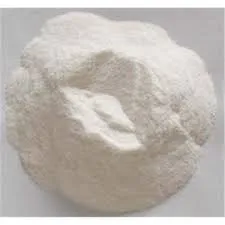
Dec . 22, 2024 10:00 Back to list
hypromellose hpmc
Understanding Hypromellose (HPMC) Its Applications and Benefits
Hypromellose, commonly referred to as HPMC (Hydroxypropyl Methylcellulose), is a semi-synthetic polymer derived from cellulose. It is widely used in various industries, ranging from pharmaceuticals to food production, and cosmetics. The unique properties of HPMC make it an essential ingredient in many formulations, contributing to their effectiveness and stability.
Properties and Composition
Hypromellose is characterized by its ability to form gels and films, which can dissolve in water to create viscous solutions. It is a non-ionic polymer, meaning it is stable across a wide range of pH levels, making it an excellent choice for various formulations. The chemical composition of HPMC includes hydroxyl and methoxy groups, which enhance its solubility and viscosity characteristics, allowing it to function as a thickening agent, emulsifier, and stabilizer in different applications.
Pharmaceutical Applications
One of the most significant uses of hypromellose is in the pharmaceutical industry, particularly in drug formulation. HPMC is frequently used as a excipient in tablets and capsules, aiding in the controlled release of active ingredients. Its gel-forming properties help in binding the ingredients, ensuring the tablets maintain their integrity during storage and consumption. Additionally, HPMC is used in ophthalmic preparations, such as eye drops, where it acts as a lubricant to prevent dryness and irritation.
Hypromellose's high viscosity and mucoadhesive properties are crucial in formulating sustained-release drug delivery systems. By controlling the release rate of the active pharmaceutical ingredient (API), HPMC enhances the efficacy of medications, resulting in improved patient compliance and therapeutic outcomes. In recent years, researchers have explored its potential in developing new delivery systems, including nanocarriers that can successfully transport drugs to targeted sites in the body.
Food Industry Applications
hypromellose hpmc

In the food industry, HPMC serves multiple purposes, including as a thickener, stabilizer, and emulsifier. Its ability to retain moisture helps improve the texture of low-fat and gluten-free foods, preventing them from becoming dry or crumbly. HPMC is also used in formulations of sauces, dressings, and baked goods to ensure a consistent texture and prevent ingredient separation.
An important benefit of HPMC in food applications is its dietary fiber content. As a soluble fiber, it can support digestive health without the caloric load associated with other thickening agents. As consumer preferences shift towards healthier food options, the use of HPMC as a functional ingredient is on the rise, leading to innovations in food product formulations.
Cosmetic and Personal Care Uses
Hypromellose is also prevalent in the cosmetics and personal care industry. It is included in various products such as shampoos, conditioners, lotions, and creams. HPMC acts as a thickener, ensuring a smooth application and improving the overall feel of the product on the skin or hair.
Moreover, hypromellose's emulsifying properties contribute to the stability of cosmetic formulations, preventing the separation of oil and water phases. Its use in gels and ointments enhances the moisturizing properties of these products, providing a protective barrier that helps retain skin hydration.
Conclusion
Hypromellose (HPMC) is a versatile polymer with significant applications across multiple industries, including pharmaceuticals, food production, and cosmetics. Its unique properties, such as the ability to form gels and its non-ionic nature, make it an invaluable ingredient for enhancing product performance and stability. As research continues to explore new possibilities for hypromellose in innovative formulations, its role in improving product quality and consumer experience remains essential. Whether it’s in the pills we take, the foods we eat, or the cosmetics we apply, HPMC plays a vital role in our daily lives.
-
Versatile Hpmc Uses in Different Industries
NewsJun.19,2025
-
Redispersible Powder's Role in Enhancing Durability of Construction Products
NewsJun.19,2025
-
Hydroxyethyl Cellulose Applications Driving Green Industrial Processes
NewsJun.19,2025
-
Exploring Different Redispersible Polymer Powder
NewsJun.19,2025
-
Choosing the Right Mortar Bonding Agent
NewsJun.19,2025
-
Applications and Significance of China Hpmc in Modern Industries
NewsJun.19,2025







